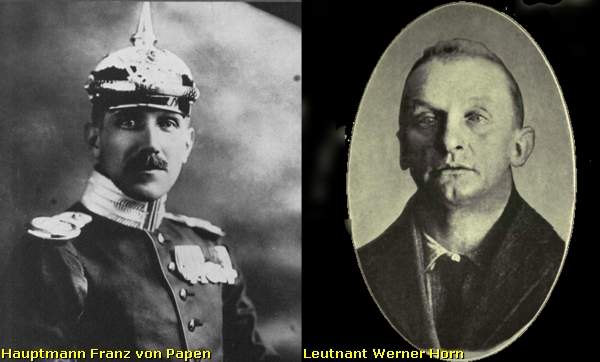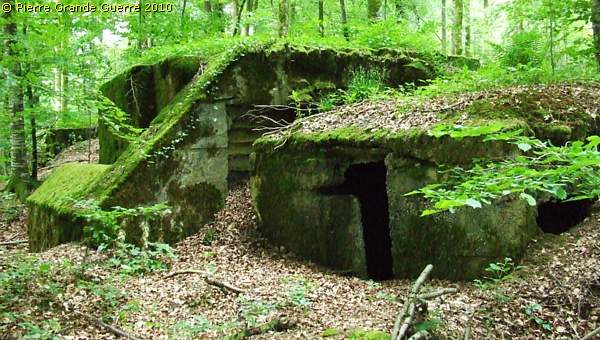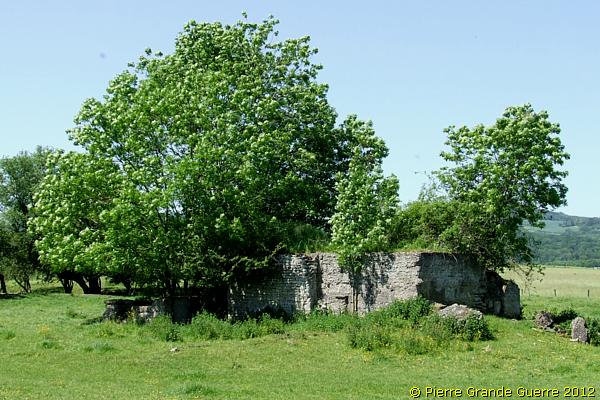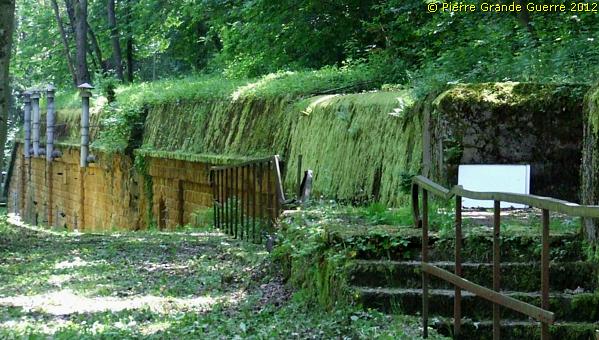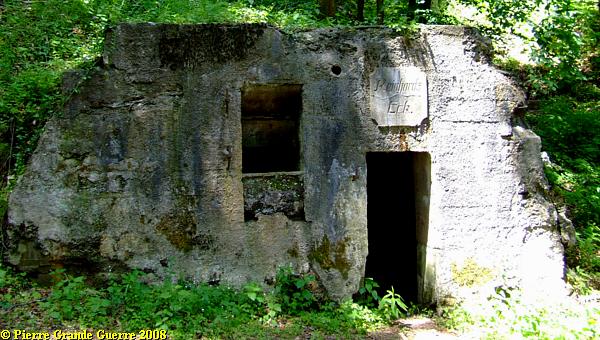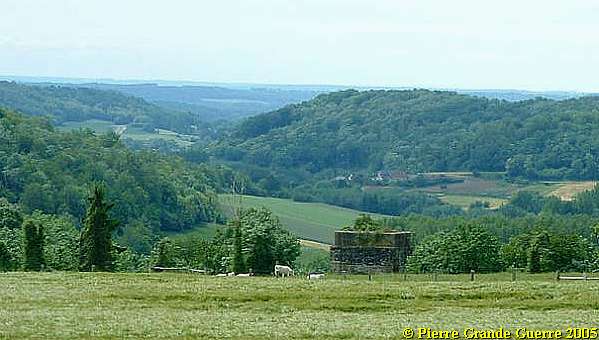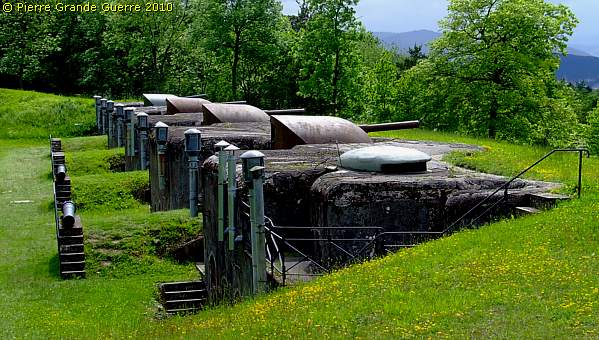YPRES SALIENT - Shrewsbury Forest - Zandvoorde Bunker
Years of visit: 2005, 2006, 2016
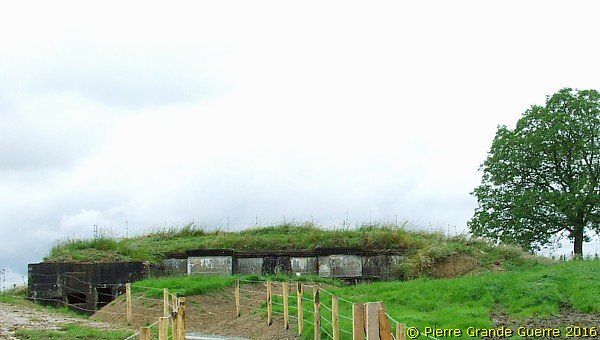
This trip starts south-west of Ypres at the N8, the Menin Road, at Clapham Junction. From Clapham Junction we go southward via the Pappotstraat. We turn left at the Vijfwegenstraat to visit the relics of German bunkers in the Shrewsbury Forest; in Flemish, the Gasthuisbossen or the Groeneburgbos. From there we continue our trip to Zandvoorde. South of the village we will visit first the Memorial for the 1st and 2nd Life Guards and Royal Horse Guards. Next we will visit the German Command Post Bunker of Zandvoorde.

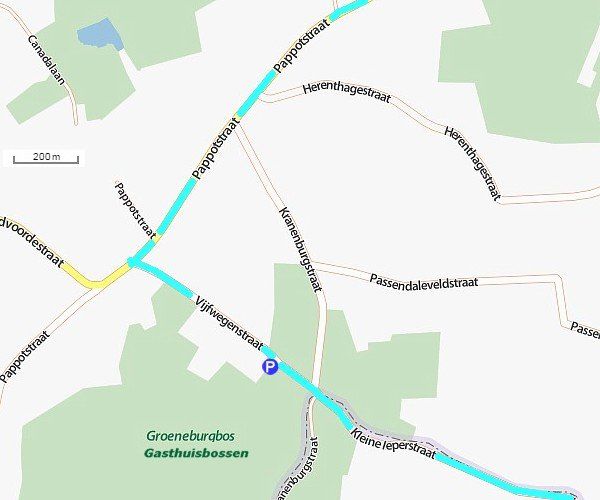
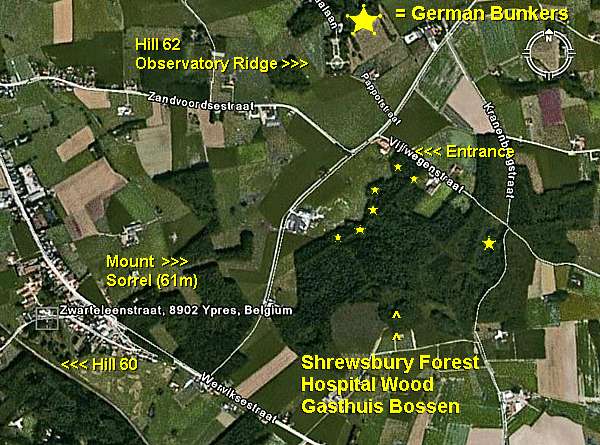
Coming from the direction of Ypres we turn right at the Memorial for the 18th Division at Clapham Junction. Later, in the next photo impression, we will inspect more closely both memorials of Clapham Junction.
For now we continue southward on the Pappotstraat.
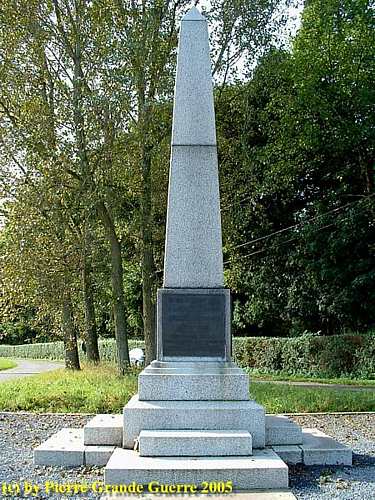
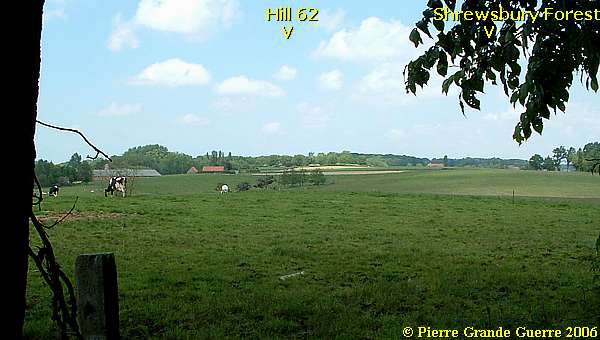
In May 2006 we tried twice to locate some relics of German bunkers in the dense wood of Shrewsbury Forest, nowadays the "Gasthuisbossen" or "Hospital Woods".
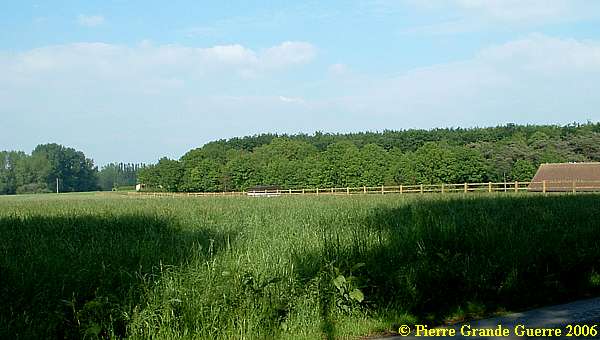
Three Trench Map Details of Shrewsbury Forest
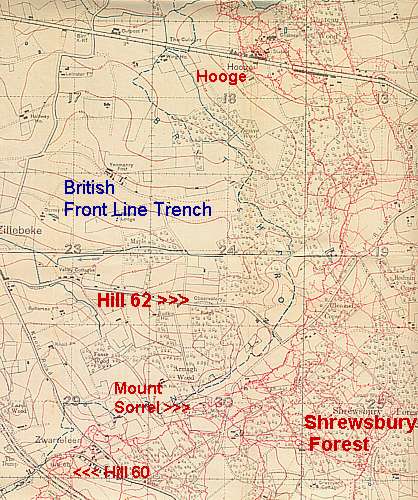
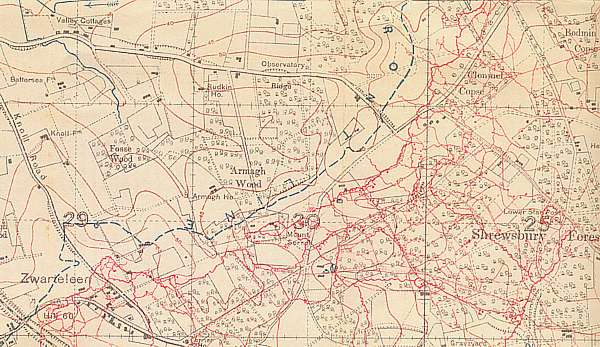
... the Germans had created in this sector of the Ypres Salient, a huge network with barbed wire networks, a maze of trenches, tunnels and dug-outs.

An information panel at the northern entrance of the "Hospital Woods" shows a period aerial photograph of the wood of 1916: zigzagging trenches and many shell holes.
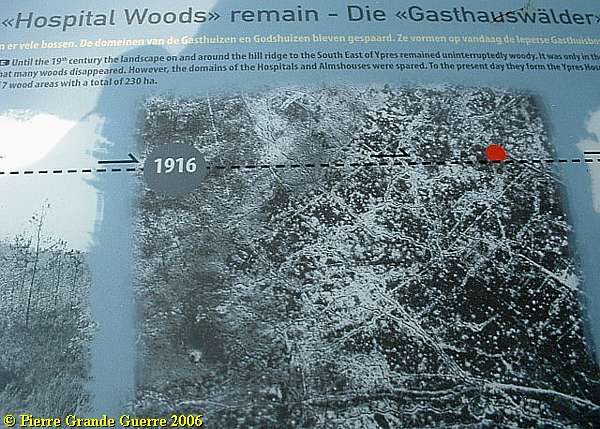
At first we were able to locate only some lumps of unnatural concrete, ....
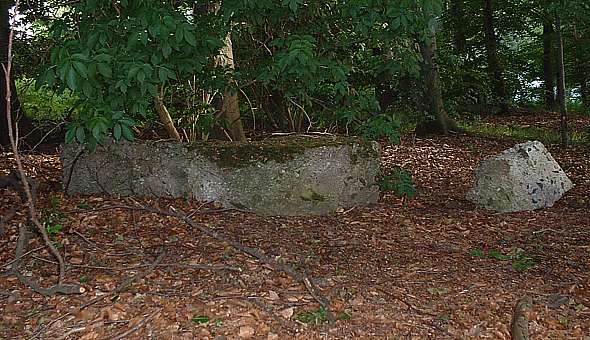

... and then, along the western edge, the foundations of a concrete shelter bunker.
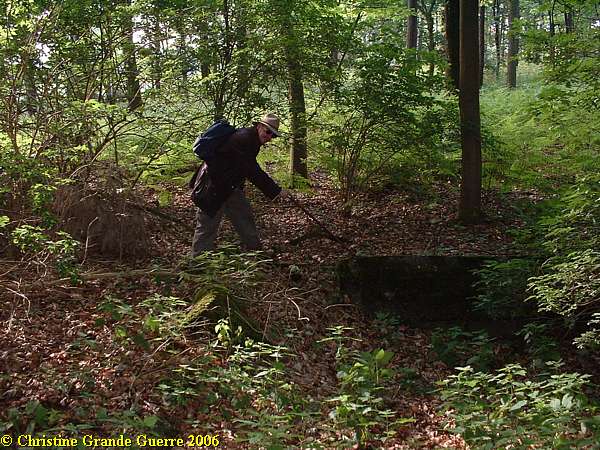
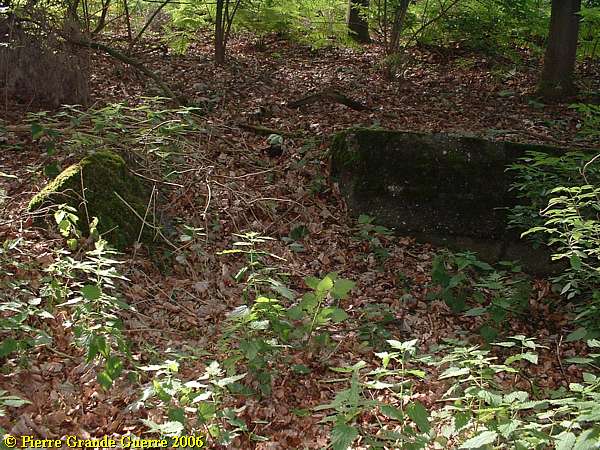
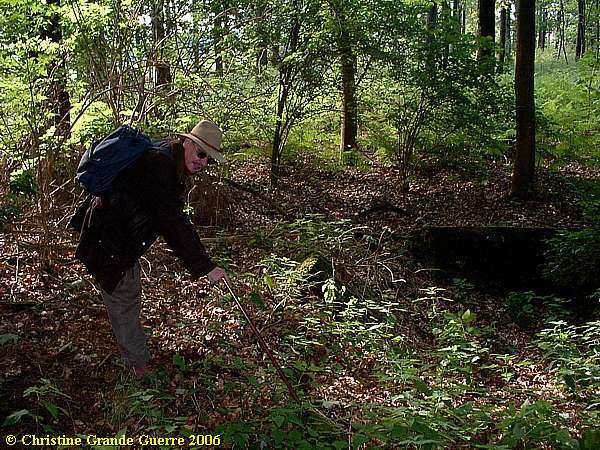
Because of the density of the vegetation and the rough swampy soil, we asked for our second visit the help of a local man with knowledge concerning the war period and the area. Our local guide, who prefers to stay anonymous, showed us some more bunkers.
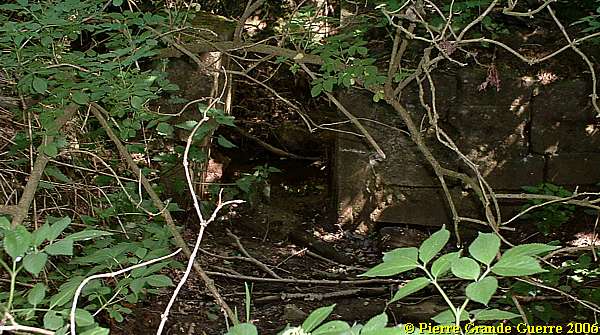
More southward, on the western edge of the forest, an overgrown bunker with its base in a pool of mud.
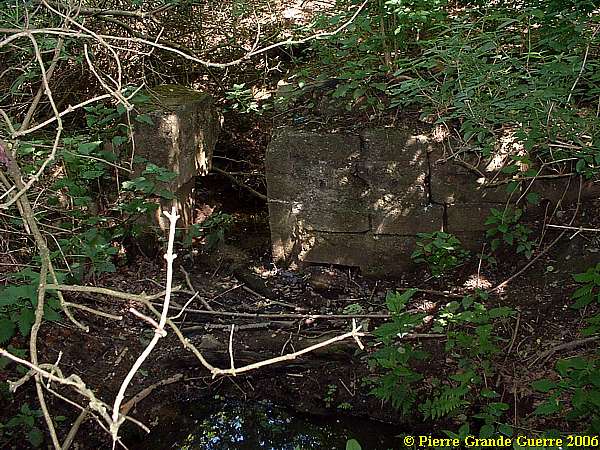

The same bunker without me. The spot was also too swampy, too overgrown, and too dangerous to get another picture.

On the eastern edge of the wood our guide showed us this bunker, still rather undamaged.

We leave the Shrewsbury Forest for our next exploration at Zandvoorde.
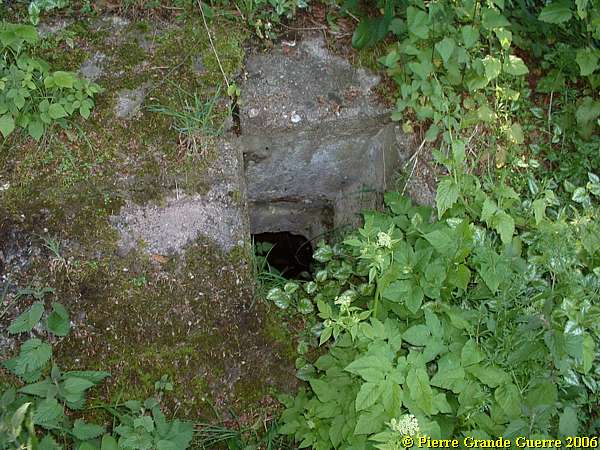



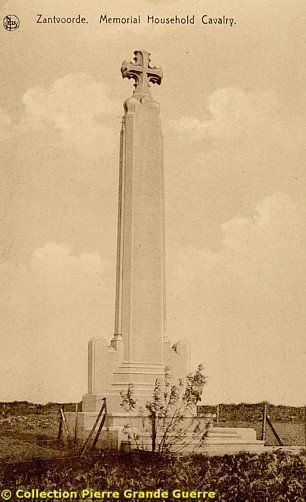
The Battle of Gheluvelt - 28-31 October 1914
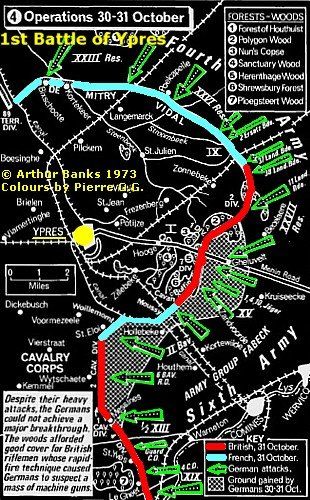
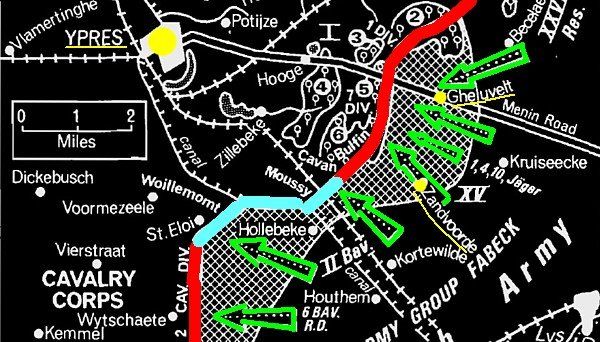
During the last three weeks of mobile warfare of the First Battle of Ypres, there were fought many sub-battles, which would create finally the salient.

The area of Zandvoorde was involved in such a sub-battle, the Battle of Gheluvelt , of 28-31 October 1914 (modern Flemish: Geluveld).
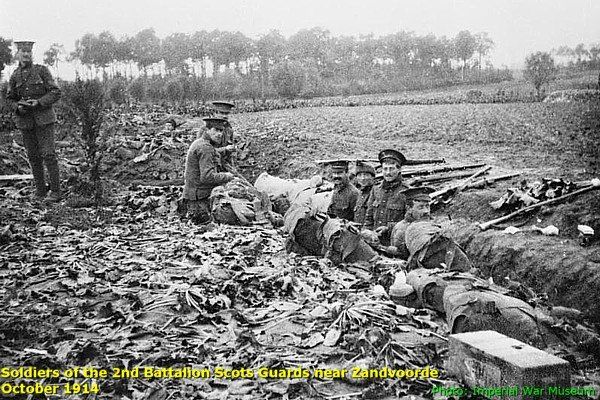

The Household Cavalry - 30-31 October 1914
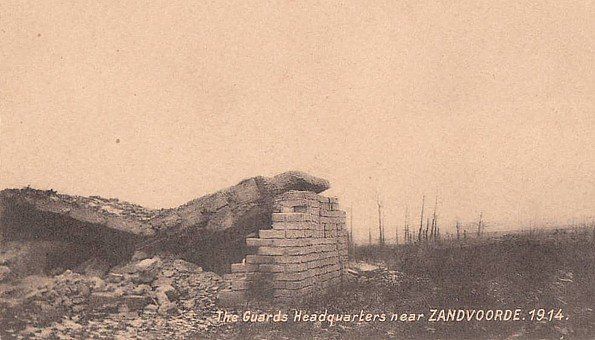
During the Battle of Gheluvelt the Royal Horse Guards Regiment was operating on 30 October in the zone around the village of Zandvoorde, when troops of the German 39th Division of the Army Group Fabeck attacked.
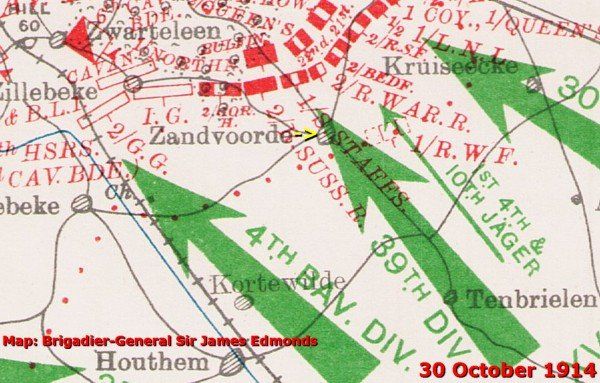
On 31 October the composite Regiment, the 1st and 2nd Life Guards, resisted another attack. Although initially the attacks were repulsed, the British were pushed out of Zandvoorde.
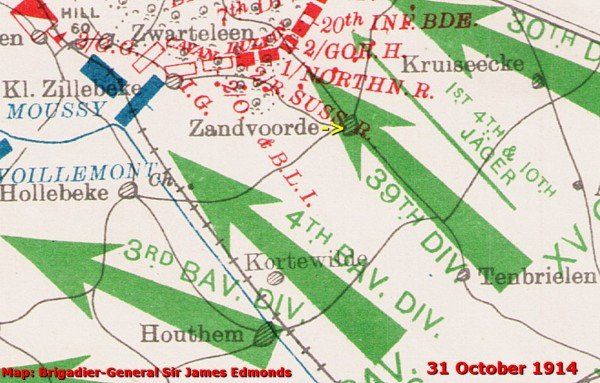
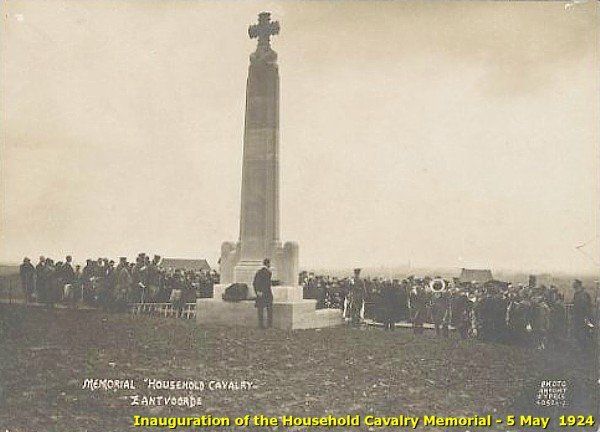
Nowadays the blue tunics of the Royal Horse Guards and the red tunics of the Life Guards are best known for their ceremonial duties in London.
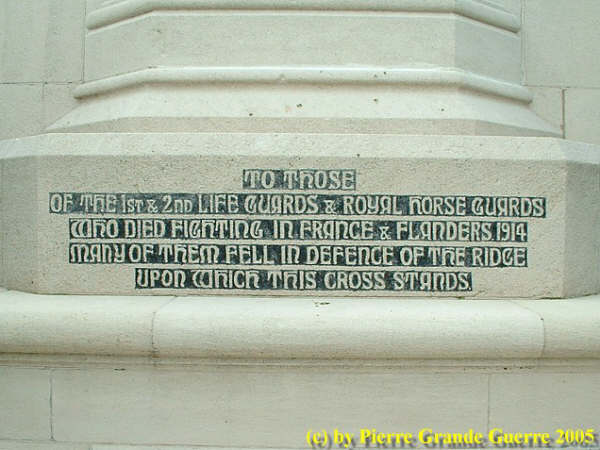


Lieutenant Spikey, our trench dog, leads the way to ...
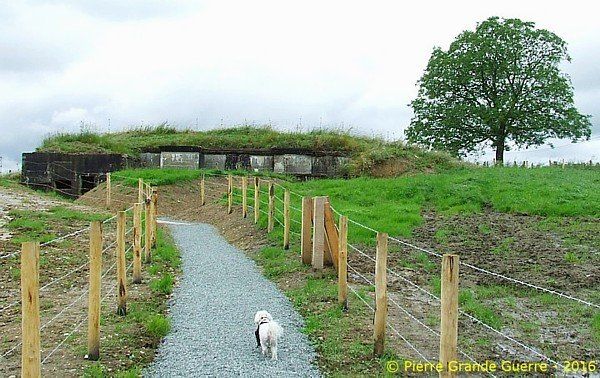
... this 1916 German Command Post Bunker .

In 2005 we visited this bunker also. We were walking in a bumpy meadow amidst cows. In 2014 the Belgian authorities renovated the site; but to my eyes the site is now too clean.
The west and blind side of the bunker in 2005.
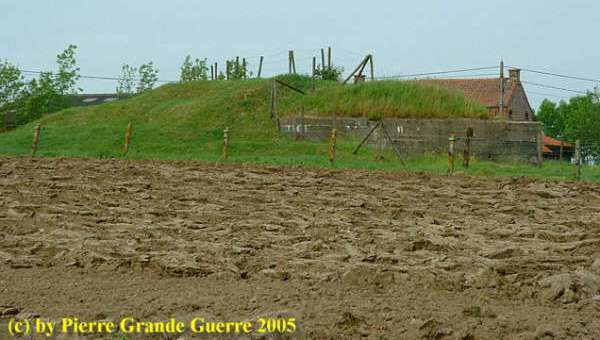
The south side of the bunker in June 2016.
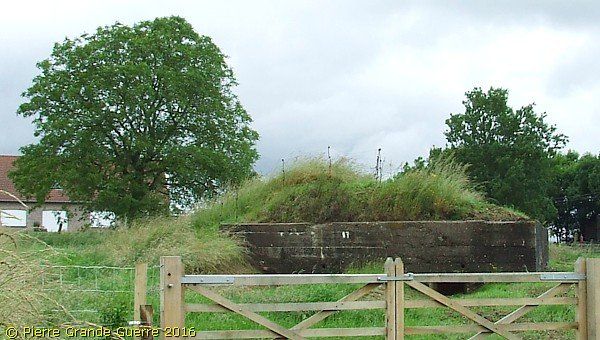
| Zandvoorde - 22 December 1917 |

These two details of a British trench map, drawn after the Third Battle of Ypres, show approximately the same area.
The second detail of the trench map below shows the area south of the village of Zandvoorde.

To help you to compare the second trench map detail with the situation today I repeat the satellite photo of 2016. Notice on the right the diagonal, north-south road of the Komenstraat.

Back to the bunker itself, and let us inspect it again in more detail.

The left or the southern entrance of the bunker.

On the left side there is still an inscription on the concrete wall, mentioning the name of the construction company:
“Built by 3 Company “Armierungs” Batallion 27 - 1916" .
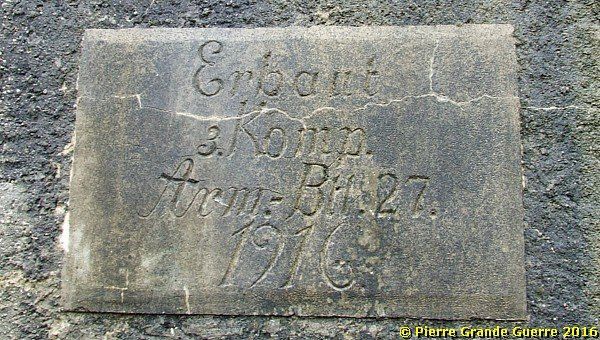
I enter the bunker via Guard Block 1, and to my right I see a concrete breastwork corridor, with entrance to 4 other rooms.
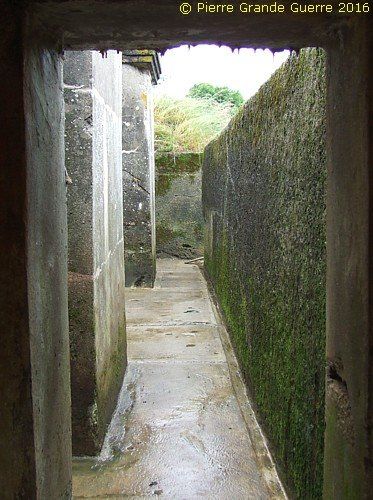
Before I continue with showing the interior of the bunker I show my 2005 photos of the most informative panels, which the authorities decided to remove, alas.
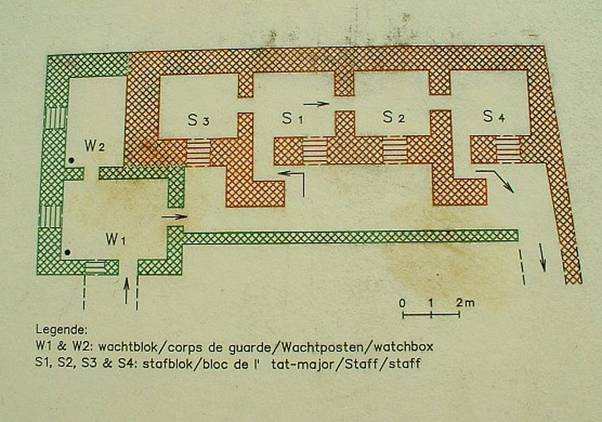
| Translation from Dutch:
|
| " German Command Post Bunker Zandvoorde Location: southern flank of ridge (40 m.) Function: Reserve Regimental Command Post Structure: armoured concrete, closed wall front side, east side entrance, exit south side, peepholes in the direction of the valley. Rooms: guard block with hall and room. Staff accommodation, 2 offices, 2 rooms Size: length 19 m. Roof: 1 m. to 1.7 m. thick concrete Built: 1916 by “Armierungsbataillon” (fortification engineers) Protected monument 19 April 1999.” |

The interior; Guard Block 1, the only room with two windows.
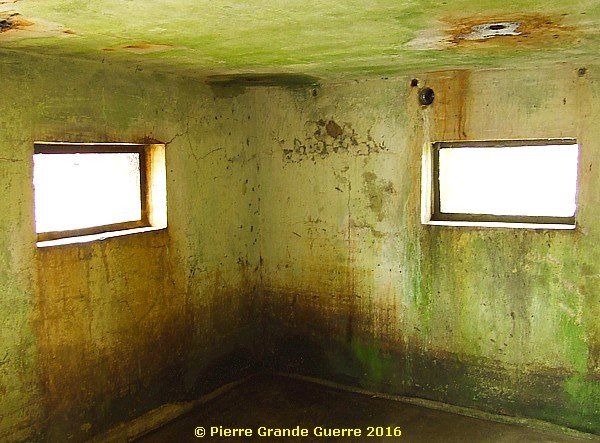
Inside: the four identical staff rooms were connected to each other, in those times separated with doors.

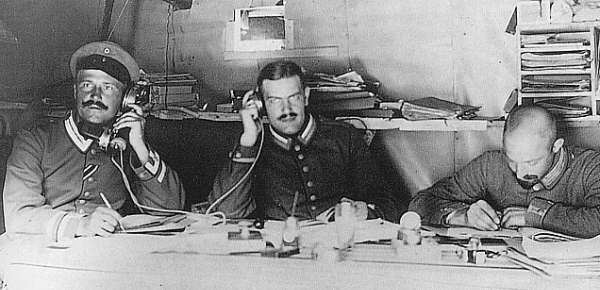
The outside corridor. View from north to south.
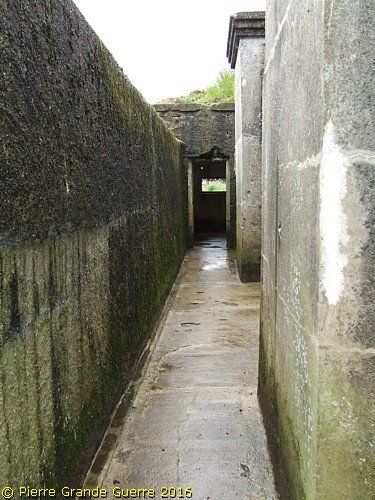
View from the northern exit. The pig-tail barbed wire poles, just around and on the bunker, are original ones.
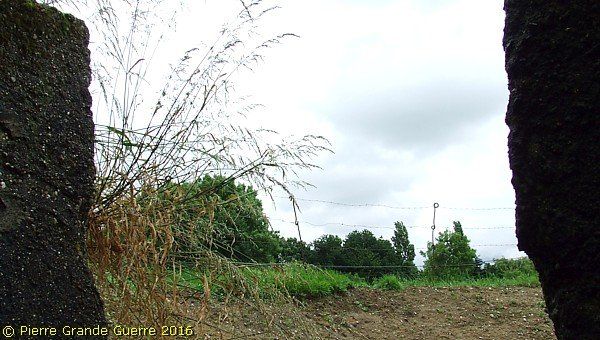
The northern exit.
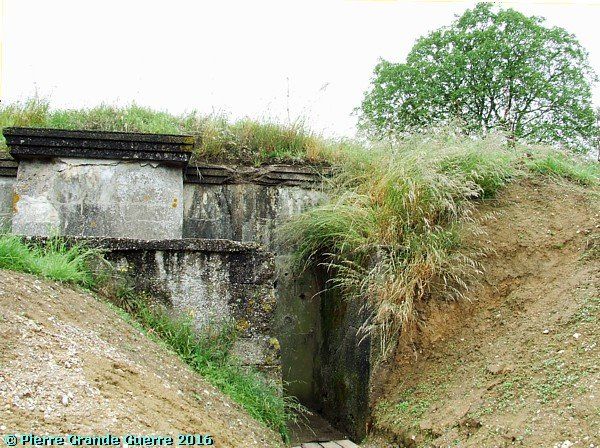
A last view at the Zandvoorde German Command Post Bunker.

We return to Clapham Junction for an inspection of the two memorials there, to continue next to explore the northern side of the Menin Road and Polygon Wood.
Continue to the next chapter: " Polygon Wood - Zonnebek e "
